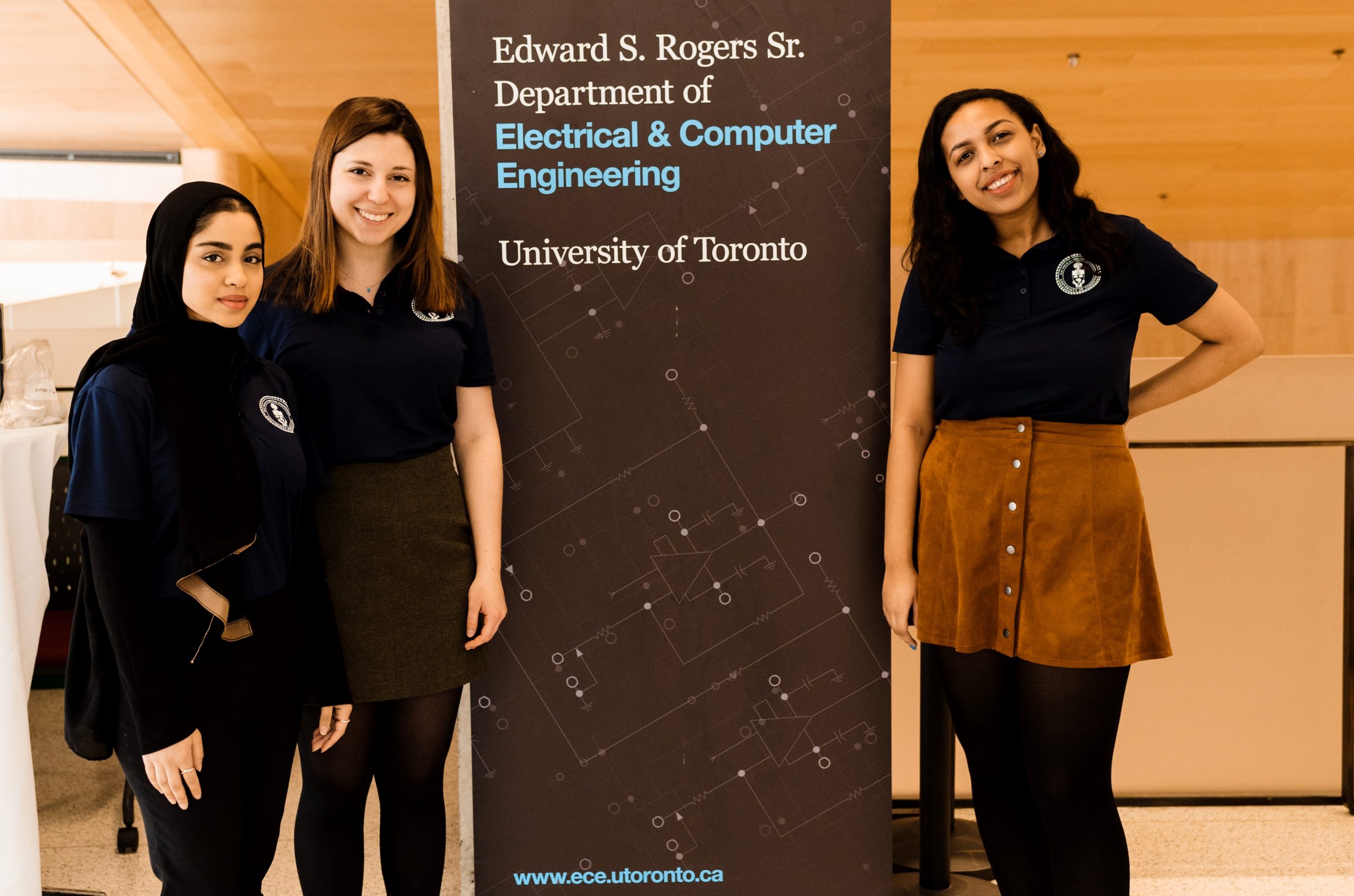More than 40% of first-year students in The Edward S. Rogers Sr. Department of Electrical & Computer Engineering (ECE) are women — the highest proportion in the department’s history.
“It’s not something I notice much while in class or on campus,” says first-year ECE undergrad Alexis Terefenko, “but when you take a step back it really is special to be a part of it. Being able to sit in class and see the number of women students, in a program that has been historically male dominated, is truly empowering to myself and others.”
Though ECE Chair Professor Deepa Kundur understands how much work is to be done, she also sees value in pointing out the progress being made, particularly in light of the International Day of Women and Girls in Science on February 11. The United Nations created the day to highlight the inequity among genders in the discipline.
“Crossing 40% is a significant milestone in our department’s history, as well as a personally meaningful one,” says Kundur. “I have the long-term perspective of my own undergraduate and graduate education in ECE at U of T.”
When Kundur was appointed Chair in 2019, she was fully aware that only 10 years ago in ECE, women students comprised 15% of the incoming class.
By 2020, across all four undergrad years, the average proportion of women students in ECE was 29%. This compared favourably with the national average of women in electrical and computer engineering programs, which was under 18%, according to Engineers Canada. (That proportion has since risen even higher — for the current academic year, it has reached 34% across all years of study in ECE, and 39% across all U of T Engineering undergraduate programs combined.)
Kundur saw her task as both consolidating the department’s gains while increasing the overall number. She prioritized the growth of women in the program by taking every opportunity to spotlight women who were making an impact in the profession, thereby modelling a variety of engineering roles.
“One of the most impactful things we can do as a department is to ensure ECE students can see themselves here,” she says. “We’ve been really deliberate in putting our women students, professors and alumnae in front of both current and future students.”
Kundur mentions the ECE Amplifier series she launched this year — which provides a welcoming space for women and allies to celebrate both communal and individual perspectives — as evidence of the momentum in the ECE community.
ECE is the alma mater of the first woman in Canada to receive a bachelor’s degree in electrical engineering, Elsie MacGill (ElecE 2T7). She became the world’s first female aeronautical engineer and made lasting contributions to the profession, which were commemorated in a Heritage Minute in 2020.
In the latter half of the 20th century, engineering lagged other professions that were making gains in the numbers of women practitioners.
In the past decade, initiatives such as Engineers Canada’s 30 by 30 — which aims for 30% newly licensed engineers within Canada to be women by 2030 — have come into play to address the issue, alongside similar strategies at provincial regulators and at the university level.
Professor Salma Emara, who joined the ECE faculty in January, is confident that the gap is closing. After all, she says, engineers are problem-solvers.
“A diverse talent pool is a seedbed for different ideas and approaches. This is what it takes to produce engineering solutions that solve global crises,” she says.
“We foster an inclusive learning environment that ensures knowledge is accessible to all students and encourages everyone to freely and confidently explore, express and build up their skills. When I go to ECE Amplifier events, I feel proud of what women in ECE have accomplished and what is ahead for them. Women engineering students should never doubt themselves!
“And when I think of women scientists who inspire me — Dr. Katie Bouman, who worked on the Event Horizon Telescope, or Dr. Rana el Kaliouby, the CEO of Affectiva, or Dr. Margaret Hamilton, who wrote the source code for Apollo 11 — the list never ends. All from different backgrounds and all leading engineers.”
Recent graduate Dana Kokoska (ElecE 2T0 + PEY), named one of 2021’s Grads to Watch, found inspiration and guidance from other women during her years at ECE, including faculty members such as Professors Elham Marzi and Li Qian, as well as other classmates.
“Being a woman in engineering, you have an instant connection,” she says. “We all looked out for one another. I found support and friendship from so many of my women classmates.”
Kokoska is determined to pay it forward and continues to encourage the next generation. She remembers her time as a volunteer with U of T’s outreach program that welcomes female high school students to the engineering community.
“It was one of the most inspiring experiences in my undergrad,” says Kokoska. “I had the opportunity to lead young girls in high school through STEM activities and help connect them with future classmates. Seeing these young women get excited about pursuing engineering — feeling like this is where they belonged — made me proud to be in engineering and in ECE.”




